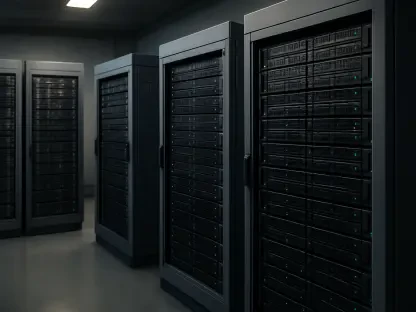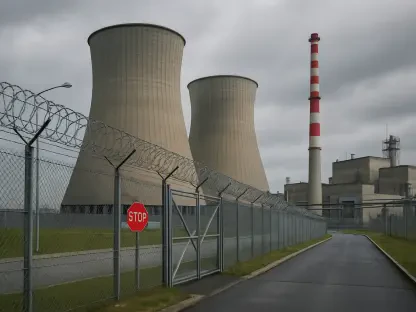Pacific Gas and Electric Company (PG&E) and Citizens Energy Corp. have partnered on an investment program designed to help lower- and moderate-income households manage their energy bills more effectively. This initiative, consisting of a significant financial investment by Citizens Energy, is set to deliver substantial savings to PG&E’s customers and enhance the overall reliability of the electrical grid. With an investment plan that aims to channel up to $1 billion into upgrading PG&E’s electric system, this program holds promise for the state’s transition to cleaner energy sources and reduction of utility costs for disadvantaged families.
Dual Objectives and Key Stakeholders
Addressing Infrastructure and Affordability
One of the standout aspects of the PG&E and Citizens Energy Corp. program is that it is not merely a financial investment but a strategic initiative aimed at tackling two pressing issues simultaneously. The first of these objectives is to bolster the resilience and reliability of the existing electrical grid. Joseph P. Kennedy III, President of Citizens Energy, emphasized the need to create a grid capable of handling modern energy demands, including those arising from the increasing use of electric vehicles and electric heating. The second objective is to address energy affordability, which has become a paramount concern for many California residents. By dedicating up to $450 million over 35 years from the profits generated, the program aims to make a meaningful impact on the energy bills of lower- and moderate-income households.
PG&E’s Executive Vice President, Jason Glickman, echoed these sentiments and pointed out the strategic importance of stabilizing customer bills. Given the rising demand for electricity driven by new energy-efficient appliances and transportation methods, finding ways to control costs while upgrading infrastructure is critical. This dual-focus approach is designed to ensure that the benefits are direct, tangible, and long-lasting for the consumer base. By targeting both infrastructure and affordability, the program stands a good chance of achieving widespread acceptance and success.
Financial Structure and Regulatory Framework
The financial structure of this investment program is carefully crafted to maximize benefits without incurring additional costs for customers. The proposal, which has been submitted to the California Public Utilities Commission (CPUC), is tailored such that customers won’t see higher costs associated with the electric system improvements on the leased transmission assets. This balance is essential for gaining regulatory approval and ensuring customer buy-in. By utilizing the proceeds from these infrastructure investments, PG&E plans to focus on making the electric grid safer, more reliable, and better equipped to handle future electricity demand.
Pending the requisite regulatory approvals, the first lease option is projected to close in 2026, with the potential for up to four additional leases over the subsequent years. This phased approach allows for continuous assessment and adjustment, ensuring that the program remains aligned with its core goals and objectives. Key to this endeavor is the commitment from PG&E and Citizens Energy to leverage nontraditional funding sources for infrastructure improvements. This not only supports the immediate needs of the electrical grid but also provides a sustainable model for future enhancements, setting a precedent for other utility companies and nonprofit collaborations.
Broader Implications and Collaborative Models
Trend of Utility-Nonprofit Partnerships
This initiative between PG&E and Citizens Energy reflects a broader trend of utility companies teaming up with nonprofit organizations to meet their infrastructure needs while also offering direct customer support. Such collaborative models are proving effective in mitigating the financial impact on low-income households, a critical concern in states like California, where energy costs can be substantial. Similar initiatives have already seen success with partnerships such as between Citizens Energy and San Diego Gas & Electric (SDG&E), triggering a growing consensus that these models can provide both infrastructural improvements and economic relief.
The primary advantage of these partnerships lies in their capacity to achieve significant scale and impact through combined resources and expertise. By aligning the profit motives of utility companies with the social mission of nonprofits, these programs can unlock innovative financing strategies that might not be feasible otherwise. This alignment is particularly critical in the context of the energy sector, where large-scale investments are needed to modernize infrastructure and transition to cleaner energy sources. Collaborative models such as these help bridge the gap between immediate needs and long-term energy goals, ensuring that initiatives are both effective and sustainable.
Future Outlook and Expansion
Looking ahead, the success of the PG&E and Citizens Energy initiative could pave the way for similar programs across different regions and sectors. By demonstrating a viable path to combine infrastructure upgrades with direct financial assistance to consumers, this model could inspire other utility companies to explore partnerships with nonprofits. The emphasis on nontraditional funding sources and strategic public-private cooperation underscores a shift towards more inclusive and community-focused approaches to tackling energy challenges.
For PG&E, this program represents a commitment to not only meet current infrastructure demands but also to position itself as a leader in innovative energy solutions. As regulatory approvals come through and the first lease options take effect, stakeholders will be keenly observing the program’s outcomes. If successful, it could serve as a blueprint for how utility companies can address both pressing infrastructure needs and socioeconomic disparities in energy access, fostering a more resilient and equitable energy landscape overall.
Considerations for Further Implementation
Pacific Gas and Electric Company (PG&E) has joined forces with Citizens Energy Corp. to launch a new investment initiative aimed at helping households with lower and moderate incomes better manage their energy expenses. This significant new program involves a large financial investment from Citizens Energy and is expected to provide PG&E customers with substantial savings while also improving the overall reliability of the electrical grid. The initiative plans to allocate up to $1 billion to upgrade PG&E’s electric system, which promises to assist the state’s shift towards cleaner energy sources. Additionally, this investment aims to reduce utility costs for families facing financial challenges. By modernizing the electric infrastructure, the program supports California’s environmental goals and provides long-term benefits for underprivileged communities. This partnership underscores the commitment to making energy more affordable and ensuring a safer, more sustainable future for the state’s residents.









